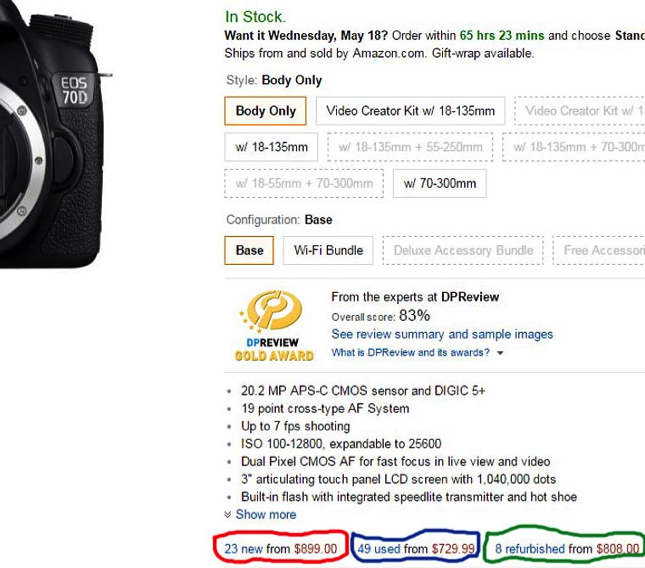|
Think of the time and energy spent on creating the online store of your dreams. Web design, categorization, ordering functions, payment processing— it’s an uphill climb, but once it’s done and you’re actually a player in the online retailing business, you can feel like a million bucks. That’s why may seem counter-intuitive to hand off some of your sales and marketing functions to a third party. Independence was your goal, so stepping backward feels awkward, right? Not necessarily— not if that third party is an e-commerce giant that can boost your bottom line. Now in its 22nd year, Seattle-based Amazon.com is the largest online retail entity in the United States. With its own rather amazing story— Amazon has yet to turn a profit despite its wild popularity— its reach into American homes (and those around the world in separate retail companies) is astounding. In part due to strategic and creative features such as Amazon Prime, a membership-based offering, Amazon commands an enormously loyal customer base. The company continually expands benefits available to Prime members, including a subscription to television and film content, and music streaming, plus free 2-day shipping. Put simply, Amazon has done the work for you as it widens your exposure in ways you never dreamed possible. It boasts an estimated 85 million unique viewers every month. Why wouldn’t you jump on board as a seller? Compare it to another high-volume sales platform: eBay. Originally launched as a venue for collectors and small-time peddlers to off-load wares, it has grown into an online presence nearly dominated by wholesalers and retailers. And while its early days featured items for auction only, all sellers are given the option to list merchandise for straight sale. But unlike Amazon, eBay customers are less attached to that platform as a brand. Amazon users are familiar with its layout and comfortable with the ability to conduct accurate, efficient searches. Those searches are a hot selling point for e-commerce vendors, but the beauty of using Amazon as an alternate platform is its dominance in internet search engines. Plug in a product name to a Google page, and chances are excellent that the first retailer popping up will be Amazon. If you happen to be pitching an item in that category, your challenge just became easier. Amazon’s base offerings are usually proprietary. But vendors selling the same products—new or used— are treated to a teaser feature on the product’s main page. In this image, you’ll notice active links that take shoppers to the same item available from Amazon sellers: Should a buyer choose to venture beyond Amazon’s offering, they will find a list of vendors offering the same product, rated for condition, price, and shipping options. This is your opportunity to sneak in as a viable option for discerning customers.
While price appears as an enticement, the beauty of Amazon is its focus on features over costs. In general, Amazon shoppers value reliability and selection over bottom-basement pricing. Their objective is to find a quality product at a decent price, and experience seamless purchasing and delivery. This is good news for sellers who want to avoid branding as a cheap discount outlet. There are practical pluses to choosing Amazon over eBay, including the ability to load bulk listings more quickly, and to bump up your prices just a bit over what you will sell for on your site. Naturally you will want to factor in the fees handed over to Amazon once you do make those sales. Their fee structure is complex and varied, and you will want to study each option to find which—if any —works best for you. Another important point is performance. Yours, not theirs. Amazon is far more aggressive in monitoring quality and shipping time, soliciting input from customers and featuring product and vendor reviews on the listing page. The reviews are more in-depth, and are longer, than the cursory eBay feedback windows. This can be a blessing for those who are confident in what they sell and how they move their product from warehouse to the customer’s home. Finally, nothing beats the fulfillment of building a clientele that may never have found you were it not for your decision to take advantage of a mammoth e-commerce presence like Amazon. Your reputation gets a boost by proxy, and customers looking for niche products just may fall in love with your individual store if you make their buying experience a pleasure. Don’t take our word for it. Ask around, hop online to explore on your own, and go straight to the source. Amazon is happy to offer primers that will walk you step by step into their fold. Should you decide to jump on board, and your experience is ultimately positive, there’s no reason you can’t maintain a dynamic online presence while padding your sales volume through affiliating with the King of E-Commerce.
0 Comments
Leave a Reply. |
Archives
October 2021
Categories
All
|




